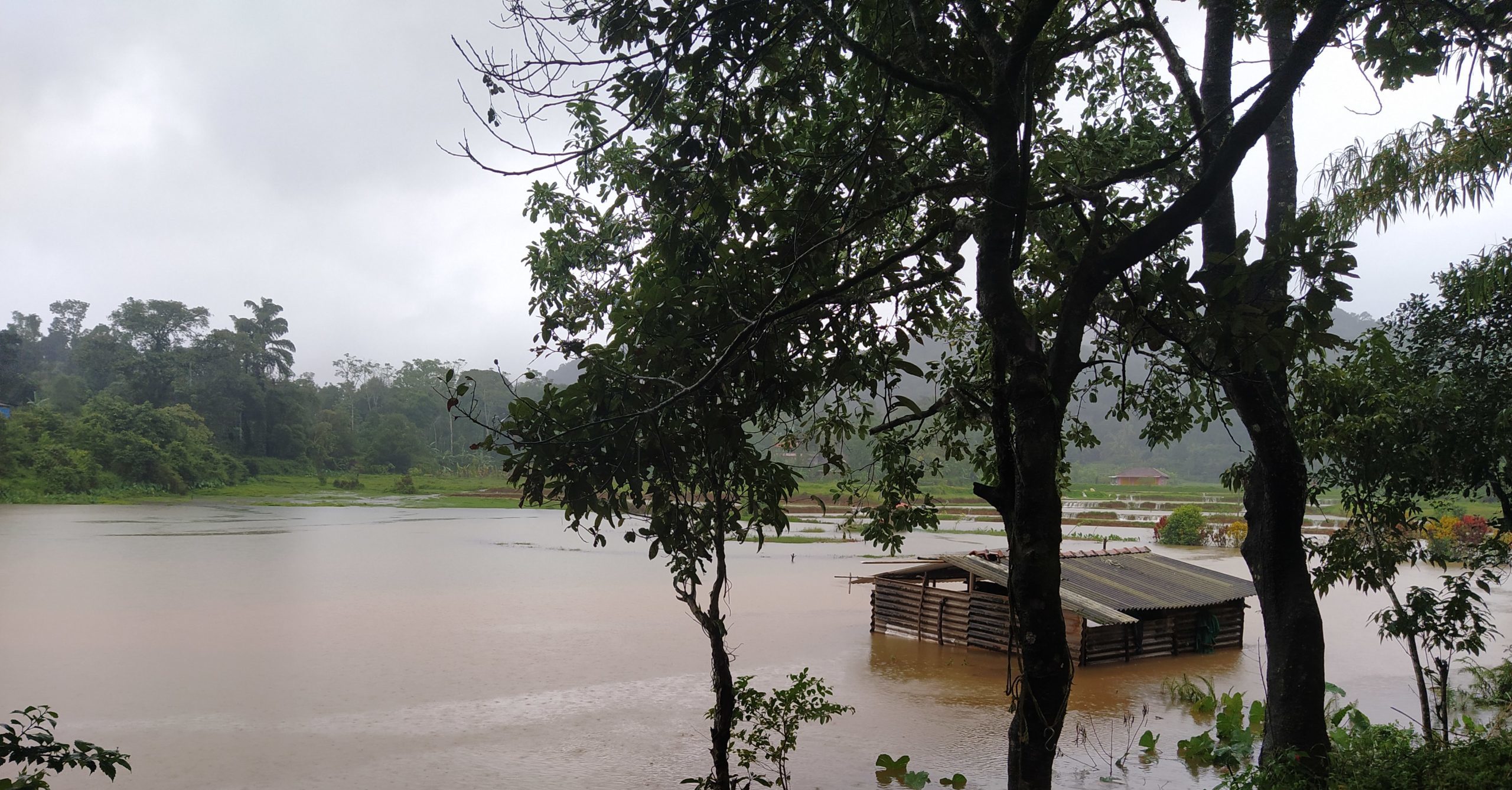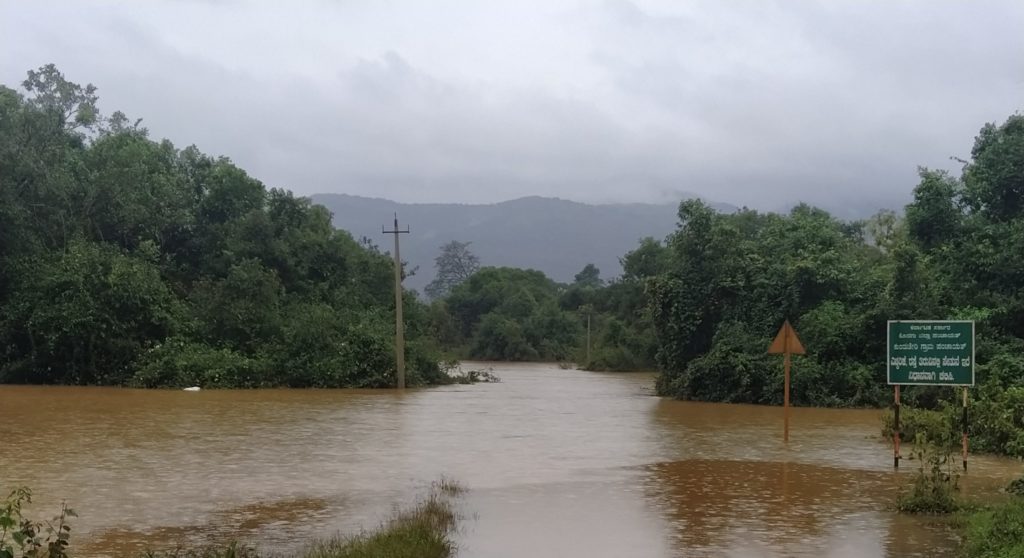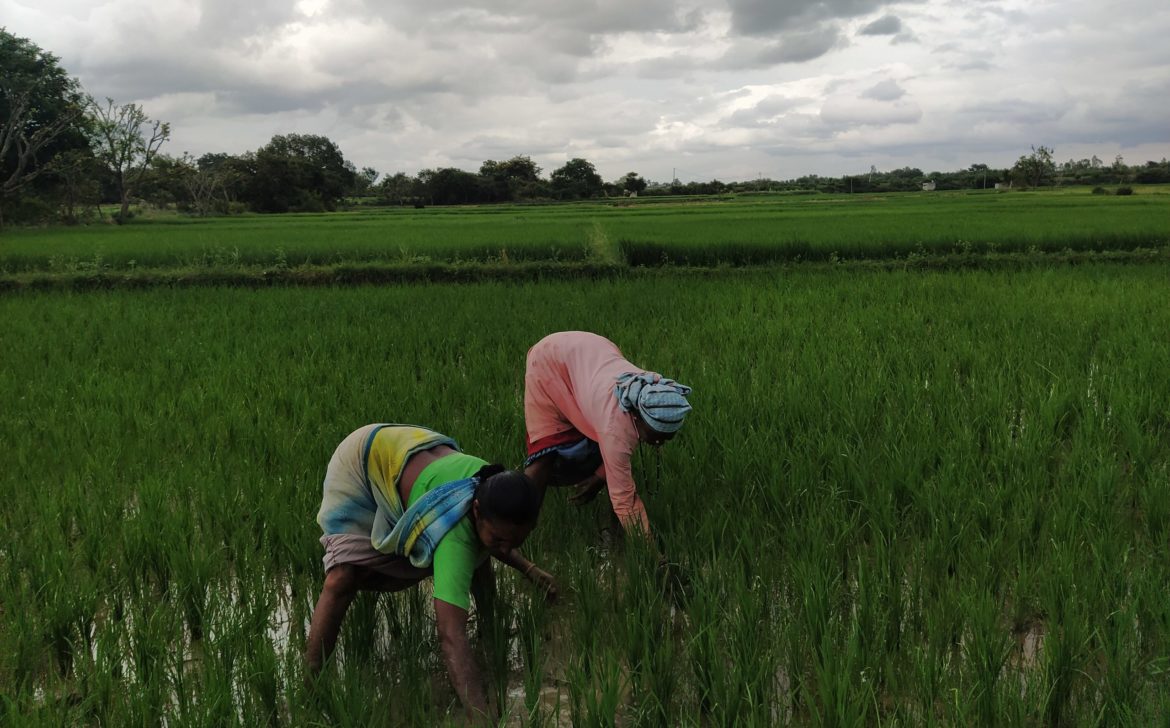City living has a way of keeping us distant from nature and its workings. We don’t have much to do with the weather either. It can be a pleasure when the weather is pleasant – like it often is in Bangalore – and an inconvenience when it rains or is extremely sunny. If not from the newspapers, we know it has rained a lot when there is flooding on the roads. The blame then is mostly attributed to the city administration for its lack of planning and management. About the role of weather and climate and climate change in particular – one is never too certain. Old-timers of the city tell you of the times when you had to wear a cardigan for most parts of the year and never needed a fan. Weather enthusiasts and professionals also tell you that the patterns of rainfall are perhaps changing – with fewer rainy days and short spells of very intense rain. However, that is not always said with a lot of certainty. For the longest time, Bangalore had only a couple of weather stations. While people had observed differences in rainfall between neighbouring localities, there weren’t as many weather stations and hence the data could not capture these local variances. It’s only now that there are multiple private and public weather stations across the city.
Our perspective of the weather changes significantly when we are in a more rural setting. This year the pandemic gave us this opportunity. We have a home in Coorg (Kodagu) that also runs as a homestay. Over the last several years, work, school and other commitments had not given us an opportunity to visit and spend as much time in Coorg as we would have liked. Now with children studying from home, a grandmother who was visiting and my in-laws – all senior citizens, we decided to move to our place in Coorg to spend time there. Bangalore was reporting about 500 new COVID cases a day in June then. While the southwest monsoon hit Kodagu in the first week of June this year the rainfall had not been all that impressive. Local conversations were around something about the monsoon not being ok and the choosing of appropriate days to sow paddy. June is normally quite a rained out month all over the western ghats – with little or no sun.
Unlike in Bangalore, rainfall is measured, tracked and spoken about a whole lot more in Coorg. And this is an old practice. The coffee growers’ and farmers’ calendar is very linked to the rain. Most coffee growers have detailed daily rainfall records over the past several years. When a large estate changes hands, the rainfall data is also transferred. There is also a local rainfall prediction calendar that is created every year and the locals look to it as much as they look to the skies for rain. Across the region several types of rain are also acknowledged. The blossom shower, a period of soft rains, rain that comes with lightning and thunder and heavy rain that comes with heavy wind being the ones that are often spoken about. It’s the rain that comes with the wind that is thought to bring springs in the region alive. The blossom showers in March/April are critical for the coffee buds to bloom. Over the past couple of years, the blossom showers have not been as predictable. When the blossom showers are not on time the coffee yield is not as good. Hence the growers now pump groundwater and irrigate the coffee plantation with sprinklers so as to simulate the rain. So much so that this has become the default behaviour for many farmers who have too much at stake to wait for the rain. This results in heavy groundwater extraction in the months just before the start of the monsoons and which is also incidentally the driest part of the year with the lowest groundwater levels. This sudden surge in groundwater extraction results in a sudden drop in water tables. People with shallow open wells find their wells dry out overnight and it’s only the deeper borewells that continue to yield in times like these. In fact, for this period of time, there is almost a drought-like situation in an area which otherwise for most parts of the year has groundwater at just a few feet below ground level.
The July rainfall was also 47% less than normal.
Over the last 2 years, around the second week of August, extreme heavy rains and continuous gusty winds have been observed over a period of a couple of days. These are intense rainfall days which bring down rain over a very short time – that rain which is normally expected to fall over the period of a month. This rain has been wreaking havoc in the region – floods and landslides leading to loss of life and property. The days are also anticipated with a certain sense of foreboding as the floods of 2018 are still in recent memory. Intense rainfall combined with extensive deforestation and other changes in land use has been leading to fatal landslides. Last year (2019) Kodagu received 935 mm of rain during the first 10 days of August – way more than the average rainfall of 600 mm for the entire month – while in 2018 Kodagu received an average rainfall of 1,033 mm in August.
Much like the previous two years, the rainfall in the first two weeks of August was fierce. Between August 1 and August 11, the district had received 647 mm of rain, according to the Karnataka State Natural Disaster Monitoring Centre website. Bhagamandala which is about 7km from our home received over 400mm of rain in 72 hours. This year too there was a major landslide near the Talakaveri temple (Talakaveri is in Brahmagiri hills near Bhagamandala in Coorg district, and is the source of the river Kaveri) that resulted in the loss of land and life.
The Cauvery – the river that supplies water to a large part of south India and is fiercely contested for its waters – flows about 500 meters from our home. It’s only over the last two years that the waters from the Cauvery have flooded our fields as well as our neighbours’. We lost the paddy saplings that we were waiting to transplant. Our neighbours lost their planted field of paddy.

The cowsheds in the fields were submerged and the cattle had to be moved to higher land.

Streams that were flowing below bridges at a fair 20ft below bridge level had now submerged the very same bridges. The heavy rain and gusty winds brought down electricity poles. There was no power for 10 days. However, lack of electricity did not seem to make that much of a difference to most local people’s lives. It meant they could not watch TV and had to rise and sleep with the sun. Generators had to be sought out to charge mobile phones. Soak pits would not leach into the ground and so the toilets would not flush.


Our neighbour, an 80-year-old gentleman who has lived in the vicinity for far longer and raised seven daughters in the area, told us that the first time that he remembers the water levels having risen as much (submerging our fields and his) was perhaps in 1965. Since then it’s been this bad only over the last two years. The water levels rise very rapidly and do not recede as quickly. The land is already too saturated to absorb the sudden onslaught of heavy rain. The winds make the springs come alive, thereby bringing more water to the surface. This results in small and big landslides on many of the hill slopes. According to him and a lot of people we spoke to – something is surely amiss with the weather. They can’t quite place their finger on it. It’s not called climate change – as of yet.
While on one hand, Kodagu struggles with rains and floods, climate change has also resulted in reduced rainfall and drought-like conditions in the districts of Kolar and Chikkaballapur in the peripheries of Bangalore. This has then led to reduced farming and low crop yields in the region.
To cope with these changes 440 MLD (million litres per day) of treated wastewater from Bangalore is planned to be pumped to fill 126 lakes in the drought-prone Kolar and Chikkaballapur districts for the purpose of groundwater recharge. It’s been more than a year since the start of this project. Many of the lakes are now full, thanks also in part to the rainfall this year. With the filling of the lakes, the groundwater tables in this region have risen. Farmers are pumping this water out through open wells and borewells to irrigate their crops. Many of them are planting paddy after 5-6 years of low/no crops. A lot more biodiversity is starting to get noticed around these lakes. While there are questions around water quality and the sustainability of this programme, the treated wastewater does seem to provide some form of succour to the otherwise drought-prone districts. The predictability of the wastewater transfer (given that Bangalore city does generate wastewater every day) also guarantees some resilience to the farmers against drought and against climate change.
While we can argue over whether these weather patterns are due to climate change, what is quite apparent is that something is not quite as expected. If we are to survive, we have to adapt to the weather and this would mean changing the cropping calendar and perhaps even changing the crops – in rural areas. In urban areas, we have to look seriously at our water demand and see how we can make do with less – of everything. As weather patterns turn unpredictable and rivers run dry, groundwater is seen as the lifesaver. And that too is quickly depleting in most parts of the country. The answers to our water security certainly lie to a large extent in our ability to reduce our water demand, our ability to recharge and manage our groundwater and our ability to treat and reuse wastewater as a resource in sustainable ways. It is important for the people in the city to also know more about their source of water and watch out for the health of the river and lakes. This would mean saving and managing the catchment of the river. It’s these steps that can help us build climate resilience.

6 comments
Agree with your conclusion that Water Security should be an important national priority. And we need more citizen awareness to influence the right policies
Nicely written. More awareness needed among urbanites on these issues; we take so much for granted.
This is such a nice way of locating climate change to show how it is catching up with us so fast and so furiously. In our disconnected lives, we hardly get the full picture
Wonderful article Shubha!! This is your H10 Junior from batch of ‘98. I have always been a fan of your contributions towards water restoration. I particularly like the grass root solutions that you and your organizations come up with to help refill lakes and dried water holes. Keep up the good work!
Great article
And like you said, I think that it is important to look at things that are going wrong and try and figure out what can be done; rather than debate about whether this is Climate Change or an anecdote. Many thousands of anecdotes are as compelling a reason to change our behaviour as anything else.
Very informative and insightful post, Shubha!